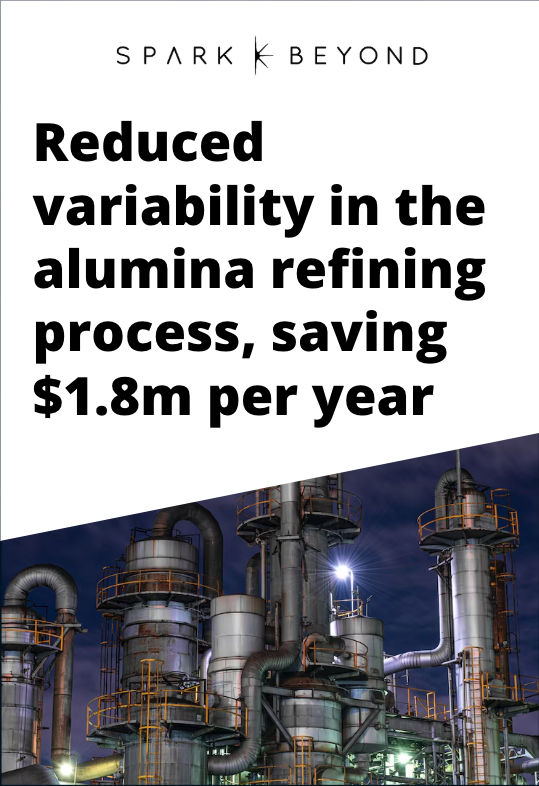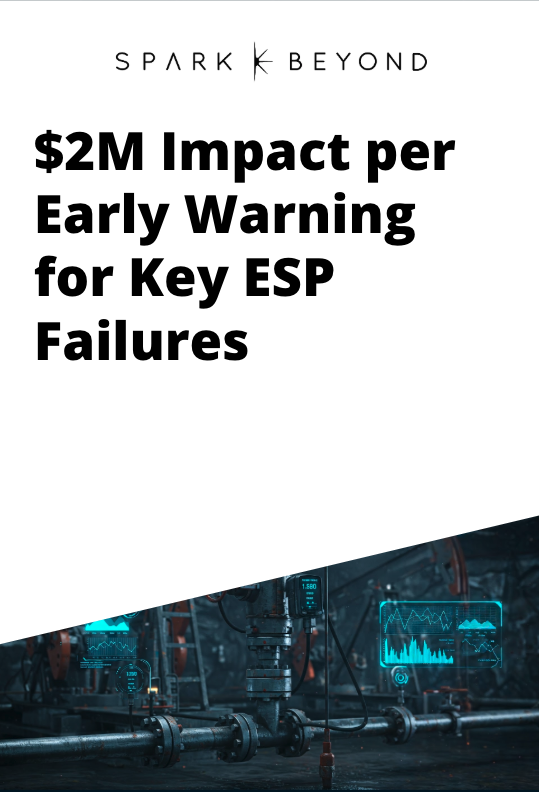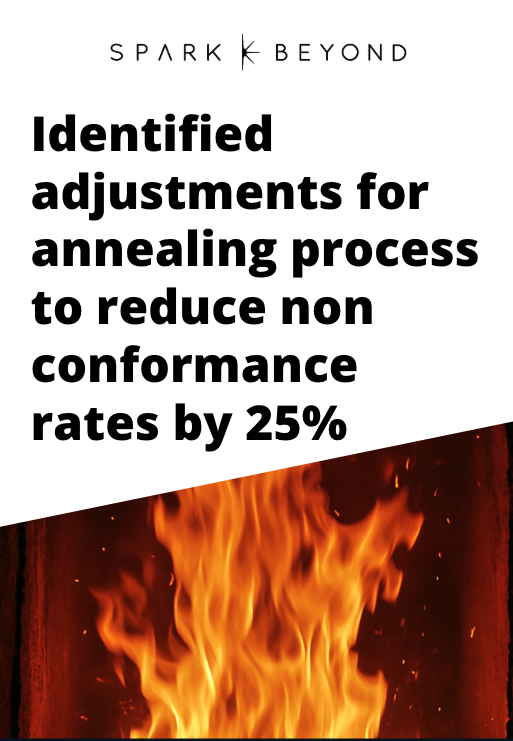Industries
→
Industry 4.0
menu
Achieve real-world ROI and operational excellence with SparkBeyond’s explainable, always-optimized solutions


Mining fuel efficiency
Reduced fleet fuel waste
10% reduction in fuel use across fleet in 4 months

Alumina refining optimization
Stabilized production
$1.8M annual savings through reduced variability
Wind farm throughput
Improved turbine performance
2% throughput gain in 2 weeks

OEE root cause analysis
Unlocked hidden downtime drivers
Identified 13% OEE improvement opportunity


Always-Optimized KPI Applications

Challenge
- Controlling the A/C ratio in the digester is critical to the alumina refining process and a major production driver
- However, the client was relying on an outdated predictive model, resulting in high variability throughout the process
Approach
The team used SparkBeyond to improve model accuracy through:
- Analyzed internal sensor data from the existing DBO model
- An iterative process to identify optimal time windows and interactions between sensor readings
- Built several models, from linear regression to advanced boosted trees, to maximize impact
Results
- SparkBeyond identified several ways to improve consistency in the A/C ratio, with one improvement alone potentially driving over $3 million in added production value
- The client implemented changes valued at $1.8 million annually
Alumina Refining Optimization

Challenge
- Identify and reduce production inefficiencies.
- Improve productivity in high-precision semiconductor environment.
- Address recurring issues with long idle times and CPU overload.
- Predict equipment failures to prevent downtime.
Approach
- Analyzed 13 months of I/O data and 20+ parameters.
- Used RCPS to identify 1,000+ statistical patterns and top 15 root causes.
- Applied predictive maintenance using vibration sensor data.
- Built failure prediction models with 90% event coverage.
Results
- 40% reduction in yield detractors in target workcenter.
- 5 root causes identified with clear mitigation actions.
- Predicted failures 4+ weeks in advance with ~10% false positives.
- Boosted maintenance capacity and line stability.
Semiconductor Process Optimization

Challenge
- A leading global beverage manufacturer wanted to improve Overall Equipment Effectiveness (OEE) for its filling and packaging lines
- Despite having Lean, Six Sigma, and excellence programs in place, they sought to use data to better understand root causes of downtime and to foresee breakdowns proactively
Approach
- Collected performance data on OEE shifts, outages, process orders, and machine status
- Identified “built-back” events as the biggest negative driver of OEE
- Applied predictive analytics to identify root causes and recommended targeted actions
Results
- Sparkbeyond autonomously pinpointed key root causes: volume output spikes, older product batches and failures at upstream machines
- Estimated 13% potential OEE improvement from addressing these causes
Beverage Line Efficiency

Challenge
- Client needed to anticipate and manage ESP (Electrical Submersible Pump) failures to minimize production loss
- Built a model to predict the probability of ESP failure within the next 100 days
- Data Sets Used: Past ESP failures, sensor readings, well trajectories, coordinates, completions
Approach
- Reframed task as remaining uptime prediction due to dataset imbalance
- Identified if an ESP is likely to fail within the next 100 days
- Used Discovery Platform with 8 datasets to uncover failure drivers
- Delivered insights as both code and natural language
- Provided daily SHAP-based predictions and explanations
- Outputs shared with maintenance teams to support preventive action
Results
- $2M impact per early failure alert
- Enabled proactive maintenance, minimizing downtime and production loss
ESP Predictive Maintenance

Challenge
Automatically identify the root causes of non-conformance amongst a sample of annealed metal parts, augmenting engineering intuition of operators
Approach
- Combined visual inspection data with furnace sensor in historian, power consumption, nitrogen, oxygen levels and environmental factors (room temp, humidity)
- Generated hypothesis and identified root causes
Results
Identified nitrogen pressure and oxygen content levels during heating and cooling respectively, which when fixed, help reduce non-conformance rates from 29% to 4%
Annealing Process Optimization



